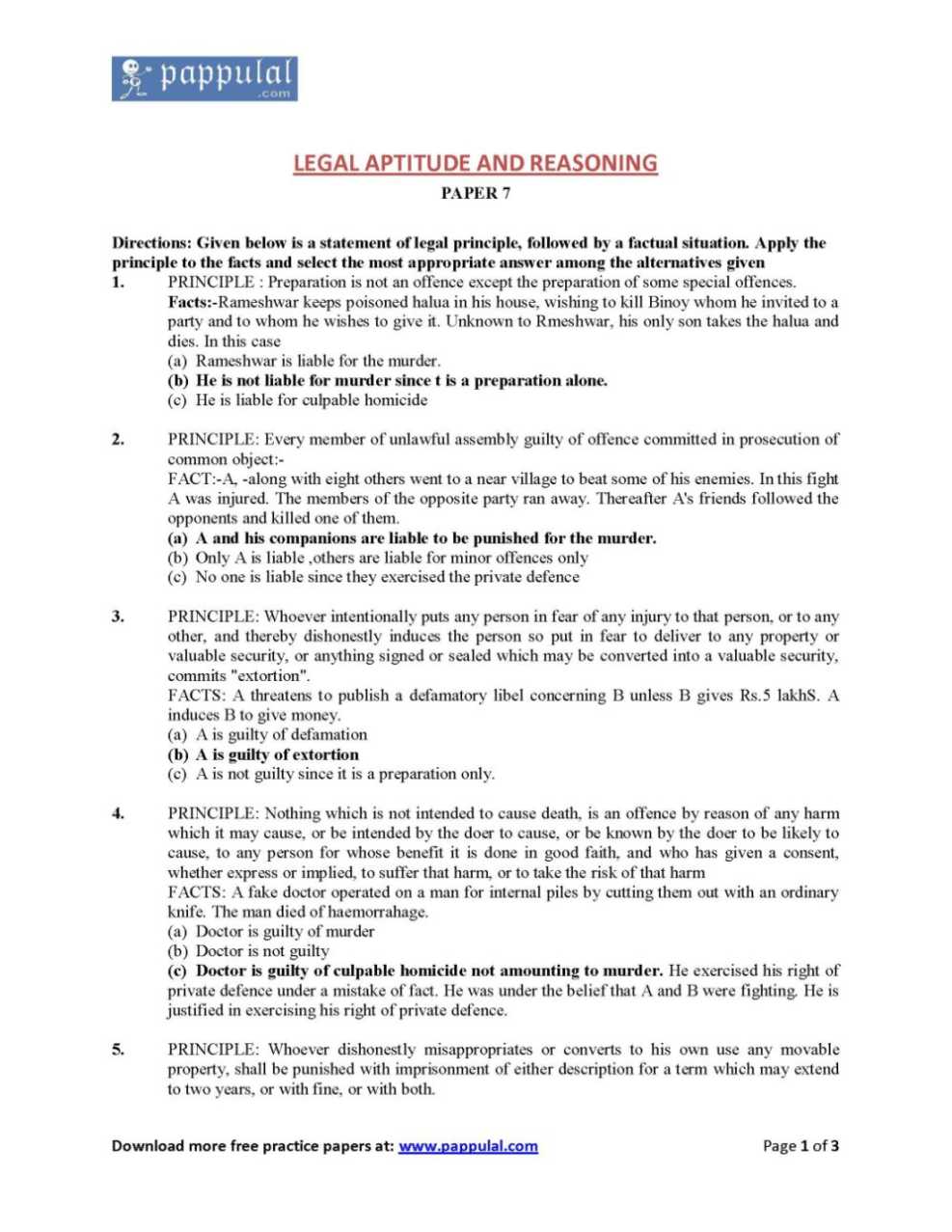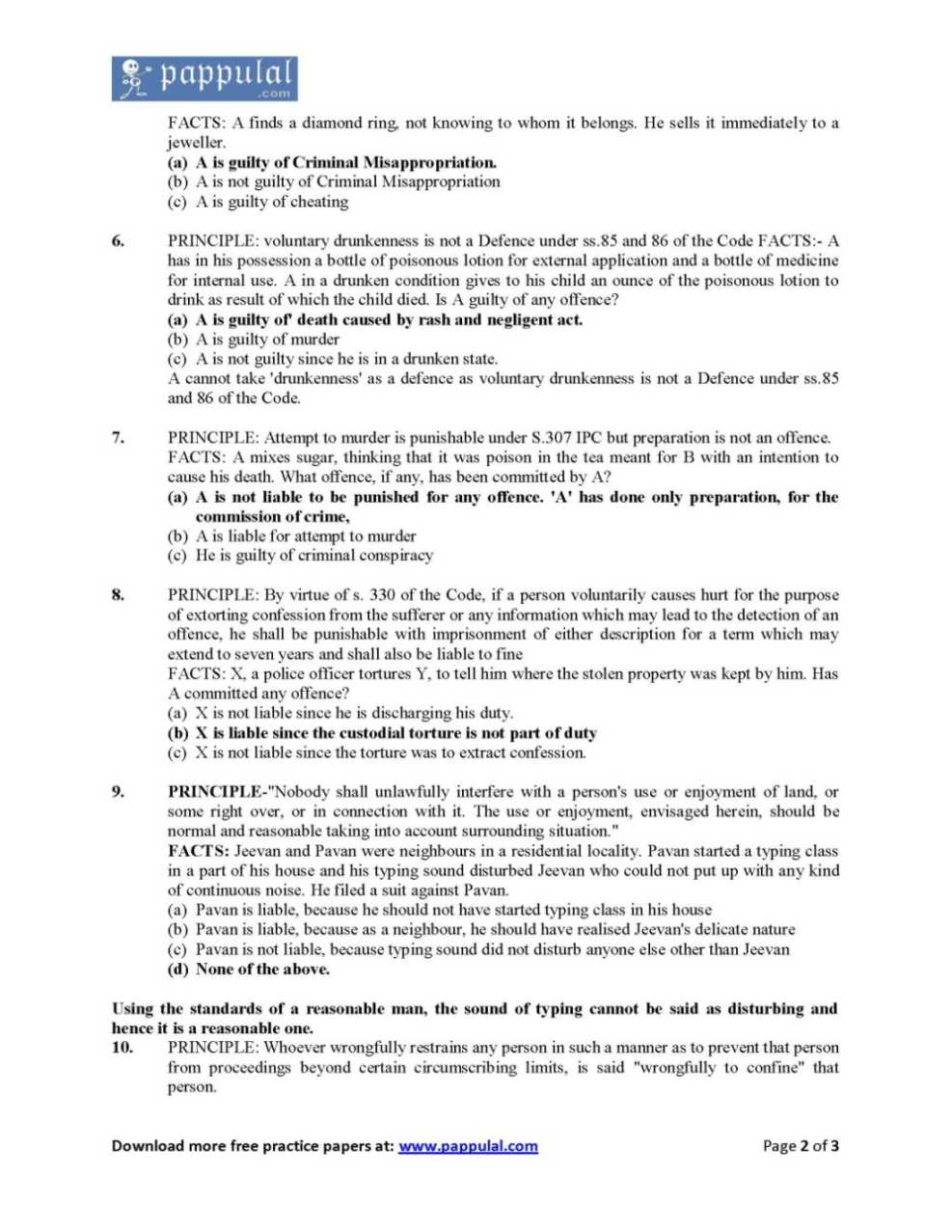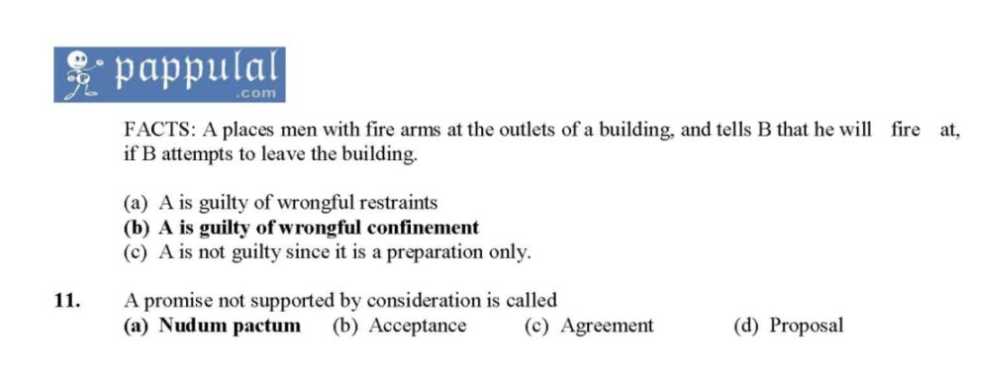|
#1
| |||
| |||
|
I want to appear in CLAT exam .Will you please give here tips for preparation for preparation to crack CLAT exam ?
|
|
#2
| |||
| |||
|
As you want I am here giving you tips for preparation for preparation to crack CLAT exam. Tips : Read a good news paper regularly. Subscribe a national monthly magazine (CSR, Chronicle, etc.) Work hard to improve your vocabulary . Develop reading habits (start reading novel) to improve reading speed. Practice Math Make a good time table Understand legal well Be regular with GK and vocabulary Solve previous year papers Pattern of the Test Paper: Total Marks 200 Total Number of Multiple Choice Questions of 1 mark each 200 Exam Duration 2 Hours Question Paper Type Objective Negative Marking Yes Subject and marks distribution: Subject Marks English including comprehension 40 Marks General Knowledge / Current affairs 50 Marks Elementary Mathematics (Numerical Ability) 20 Marks Legal Aptitude 50 Marks Logical reasoning 40 Marks
__________________ Answered By StudyChaCha Member |
|
#4
| |||
| |||
|
I would like to tell you that practice is the only magic for every single you and other people are prepariong for to crack. So do practice a lot with all possible study material you have which helps you to cracj the CLAT exam. Here I’m telling you some tips so that you can easily crack the paper of CLAT. Join a reliable institute for classroom Practice and analyse Practice math and ar, don't hate it Read the newspapers Quantify english and cr Rationalize gk Understand legal well Make a good time table Be regular with gk and vocabulary Solve previous year papers Take a lot of online mocks Stay motivated Here I have some name of the books which helps you to prepare for the CLAT exam A Comprehensive Guide For Clat Common Law Admission Test & Ll.B Entrance Examinations - Set & Ailet & Lsat Study Package For Clat & Ll. B Entrance Examinations Common Law Admission Test Clat For Under-Graduate Programme Here is the paper of CLAT Exam which also going to help you for better preparation. Question 1: PRINCIPLE : Preparation is not an offence except the preparation of some special offences. FACT: Rameshwar keeps poisoned halua in his house, wishing to kill Binoy whom he invited to a party and to whom he wishes to give it. Unknown to Rmeshwar, his only son takes the halua and dies. In this case (a) Rameshwar is liable for the murder. (b) He is not liable for murder since t is a preparation alone. (c) He is liable for culpable homicide Recommended Book Recommended Book Question 2: PRINCIPLE: Every member of unlawful assembly guilty of offence committed in prosecution of common object:- FACT: A, -along with eight others went to a near village to beat some of his enemies. In this fight A was injured. The members of the opposite party ran away. Thereafter A’s friends followed the opponents and killed one of them. (a) A and his companions are liable to be punished for the murder. (b) Only A is liable ,others are liable for minor offences only (c) No one is liable since they exercised the private defence Question 3: PRINCIPLE: Whoever intentionally puts any person in fear of any injury to that person, or to any other, and thereby dishonestly induces the person so put in fear to deliver to any property or valuable security, or anything signed or sealed which may be converted into a valuable security, commits “extortion”. FACT: A threatens to publish a defamatory libel concerning B unless B gives Rs.5 lakhS. A induces B to give money. (a) A is guilty of defamation (b) A is guilty of extortion (c) A is not guilty since it is a preparation only Related: CLAT Papers Question 4: PRINCIPLE: Nothing which is not intended to cause death, is an offence by reason of any harm which it may cause, or be intended by the doer to cause, or be known by the doer to be likely to cause, to any person for whose benefit it is done in good faith, and who has given a consent, whether express or implied, to suffer that harm, or to take the risk of that harm FACT: A fake doctor operated on a man for internal piles by cutting them out with an ordinary knife. The man died of haemorrahage. (a) Doctor is guilty of murder (b) Doctor is not guilty (c) Doctor is guilty of culpable homicide not amounting to murder. He exercised his right of private defence under a mistake of fact. He was under the belief that A and B were fighting. He is justified in exercising his right of private defence. Question 5: PRINCIPLE: Whoever dishonestly misappropriates or converts to his own use any movable property, shall be punished with imprisonment of either description for a term which may extend to two years, or with fine, or with both. FACT: A finds a diamond ring, not knowing to whom it belongs. He sells it immediately to a jeweller. (a) A is guilty of Criminal Misappropriation (b) A is not guilty of Criminal Misappropriation (c) A is guilty of cheating Related: DU Law Entrance Exam Sample Paper 1 Question 6: PRINCIPLE: voluntary drunkenness is not a Defence under ss.85 and 86 of the Code FACT: A has in his possession a bottle of poisonous lotion for external application and a bottle of medicine for internal use. A in a drunken condition gives to his child an ounce of the poisonous lotion to drink as result of which the child died. Is A guilty of any offence? (a) A is guilty of’ death caused by rash and negligent act. (b) A is guilty of murder (c) A is not guilty since he is in a drunken state. A cannot take ‘drunkenness’ as a defence as voluntary drunkenness is not a Defence under ss.85 and 86 of the Code. Question 7: PRINCIPLE: Attempt to murder is punishable under S.307 IPC but preparation is not an offence. FACT: A mixes sugar, thinking that it was poison in the tea meant for B with an intention to cause his death. What offence, if any, has been committed by A? (a) A is not liable to be punished for any offence. ‘A’ has done only preparation, for the commission of crime (b) A is liable for attempt to murder (c) He is guilty of criminal conspiracy Question 8: PRINCIPLE: By virtue of s. 330 of the Code, if a person voluntarily causes hurt for the purpose of extorting confession from the sufferer or any information which may lead to the detection of an offence, he shall be punishable with imprisonment of either description for a term which may extend to seven years and shall also be liable to fine FACT: X, a police officer tortures Y, to tell him where the stolen property was kept by him. Has A committed any offence? (a) X is not liable since he is discharging his duty. (b) X is liable since the custodial torture is not part of duty (c) X is not liable since the torture was to extract confession. Question 9: PRINCIPLE: “Nobody shall unlawfully interfere with a person’s use or enjoyment of land, or some right over, or in connection with it. The use or enjoyment, envisaged herein, should be normal and reasonable taking into account surrounding situation.” FACT: Jeevan and Pavan were neighbours in a residential locality. Pavan started a typing class in a part of his house and his typing sound disturbed Jeevan who could not put up with any kind of continuous noise. He filed a suit against Pavan. (a) Pavan is liable, because he should not have started typing class in his house (b) Pavan is liable, because as a neighbour, he should have realised Jeevan’s delicate nature (c) Pavan is not liable, because typing sound did not disturb anyone else other than Jeevan (d) None of the above. Using the standards of a reasonable man, the sound of typing cannot be said as disturbing and hence it is a reasonable one. Question 10: PRINCIPLE: Whoever wrongfully restrains any person in such a manner as to prevent that person from proceedings beyond certain circumscribing limits, is said “wrongfully to confine” that person. FACT: A places men with fire arms at the outlets of a building, and tells B that he will fire at, if B attempts to leave the building. (a) A is guilty of wrongful restraints (b) A is guilty of wrongful confinement (c) A is not guilty since it is a preparation only. Question 11: A promise not supported by consideration is called (a) Nudum pactum (b) Acceptance (c) Agreement (d) Proposal CLAT Exam paper 1    CLAT Exam paper 2
__________________ Answered By StudyChaCha Member |